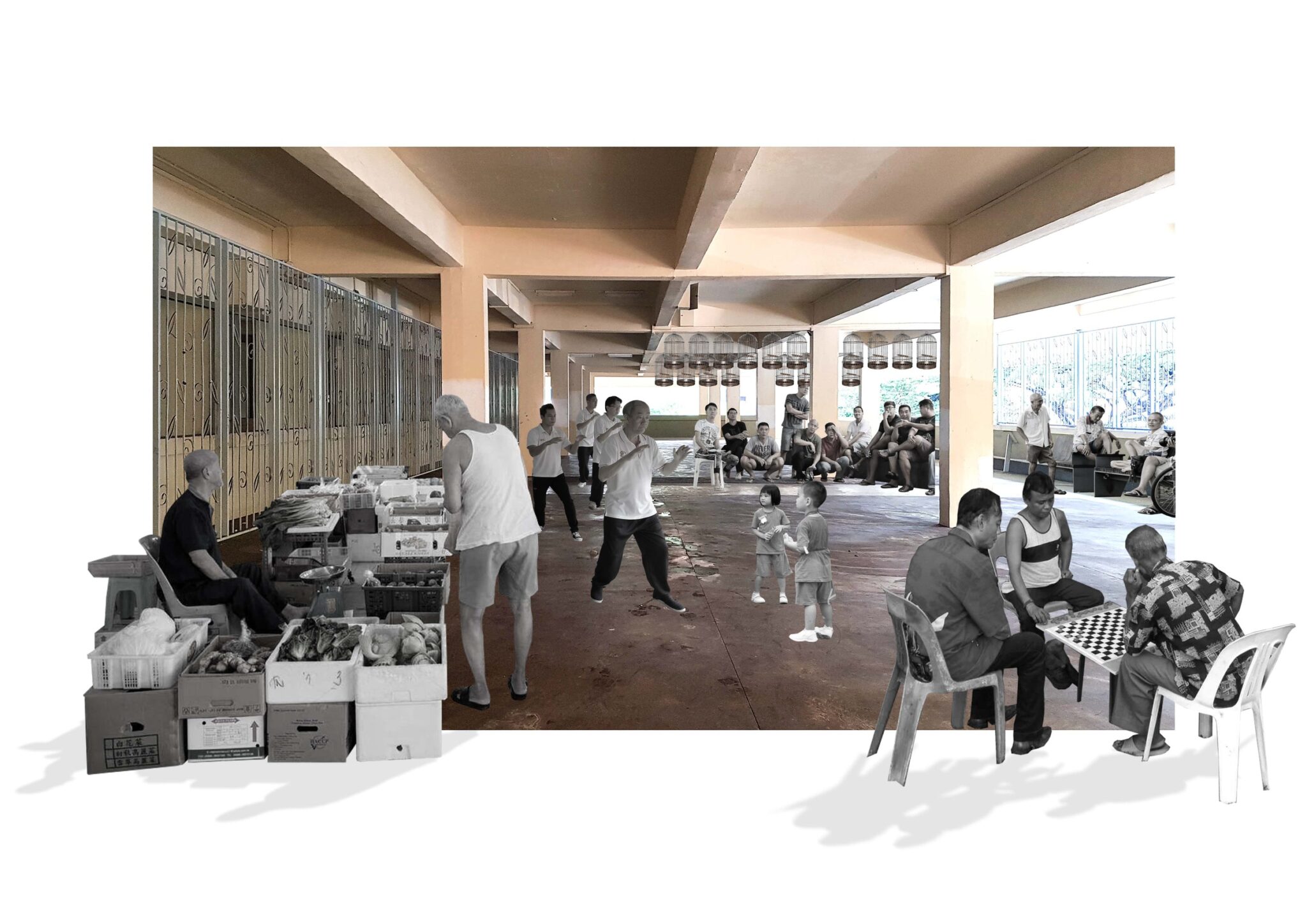A New Housing Typology for Rental Flats
Strong community ties is capable of providing a form of social support and resource network. Despite its importance, it rarely exists in HDB flats today. This project aims to investigate a new typology for rental flats that incorporates the notion of community within the housing estate. It sought to improve the standard of living for lower income families and strive towards achieving self-empowerment to break away from the cycle of poverty.
Utopian Vision
Le Corbusier’s idea of “vertical garden city” in Unite d’Habitation focused on communal living for residents to shop, eat, play, live and gather together outside their private dwelling space. This integration of communal service into the housing model has further encouraged interaction to take place among inhabitants. Drawing reference to Unite d’Habitation, a utopian vision on the future of a community orientated rental flat is being projected in the form of a sectional elevation collage.
Reconfigured Layout Plan
As compared to the void deck, the corridor has a greater possibility that residents would linger around as it is more accessible from their units. However, the linear and narrow nature of the corridor in block 1 Jalan Kukoh is not the most efficient space for residents to gather in. As an attempt to bring in communal spaces that encourage prolonged interaction, the linear walkway is transformed into an enclosed space by deconstructing and rearranging the layout plan, eventually coming up with multiple iterations.
Breaking Away from Standardization
Referencing Habitat 67 where the units are interconnected and stacked on one another, it allowed for a private garden terrace to every unit and play area throughout the building for children. By breaking away from the standardized design of HDB, new possibilities of interaction are introduced. Therefore, taking two reconstructed levels and stacking above each other turning it into a single floor increases the chance of interaction by half.
Eyes on the Street
The concept of "Eyes on the Street" as a form of surveillance provides a safety measure as residents help to keep a lookout for one another. Breaking up solid walls and having screens allow residents to have visual or verbal contact. These are explored with different degrees of privacy. With screens at the feet level, it provide clues on the safety of residents without taking away their privacy.
Persona: Single elderly living alone
With safety as the main priority, the unit is designed with a communal herb garden that allows residents to be involved in nurturing the plants. While doing so, residents are able to ensure the safety of the elderly through verbal contact. To a certain degree, it also allows a glimpse into a small area of the room such that the privacy of the elderly is still present.
Privacy is a common issue face in large family. Curtains fitted in bunk bed allow children to be entitled to a small personal space. By staggering the beds, these children get a private play corner of their own, accessible from all four beds. An opening is created at an eye level of a child for children outside to invite them out to play.
Persona: Single mother, 4 children, 1 baby
The vertical screen frames the amount of area to be seen in the room to retain privacy for the other family members. However, it is sufficient for the baby cot to be visible for residents to help keep an eye on the baby while the mother attends to her other children. When the sofa bed is folded, the space transforms into a living room.
Persona: Parents and a teenager
From the conceptual models, the idea of encouraging interaction to occur through close proximity by blurring the boundaries between the private units and communal space is executed in this unit. A cohesive language with the usage of panels are extruded from the steps of the stairs to seating in the living room and further extruded to form platforms for residents' use in the communal space.
Overview
The concept of interfaces as a form of threshold between public and private domain is explored through different implementation throughout the housing model. It is integrated to work as a system that encourages residents to not only interact but also to connect with one another.











